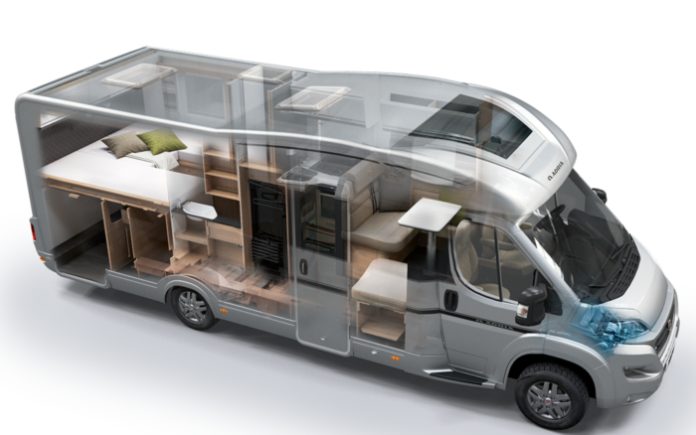With the freedom provided by motorhomes, you are your travel guide. No longer are your movements tied to available accommodation. Drivers develop and change their itineraries as they wish. Hence, the purchase of such vehicles is a prudent investment that is guaranteed to pay off. It must be taken seriously.
If the trailer or RV you intend to buy is second-hand, it is crucial to make sure it has not been stolen or damaged. Luckily, this may be quickly done through the FAXVIN service, which is accessible online. The information may be obtained via the Trailer VIN lookup.
How This Works
The company offers two distinct types of data. Both function based on VIN or ID for cars. This 17-figure combination, which is found on any vehicle, includes numbers and letters. What you do with the sequence depends on your goals.
The first service, VIN decoder, allows potential buyers to access technical specifications of the vehicle. The second option, VIN check, unlocks information concerning the past life of the motorhome.

What the Code Looks Like
Pay attention to the rules of VIN format for vehicles used and sold in the United States. Their codes are always unique, and they must contain numbers and letters — 17 characters in total. However, the letters as I, O, and Z may not be included. This means that the presence of unacceptable letters or wrong length of the code should prompt you to refuse from the purchase immediately.
The first valid reason for code format differences in the age of the motorhome. Vehicles produced before 1980 are an exception because the above-mentioned standard for VIN codes was only introduced that year. The rules were established, and implementation is controlled by US National Highway Traffic and Safety Administration.
The second reason for non-compliance with the 17-digit structure is the model type. Certain motorhome models, including Slide-ins, Truck Campers, and Cab-overs, have a serial number instead of a VIN. This is in full accordance with the law.

Where to Find the Code
Typically, you will find the string of characters under the windshield on the board (driver’s side). It is always placed on non-removable parts of a vehicle. This ensures these may not be altered by the owner without corresponding notices in the vehicle registration card.
Sometimes, you may spot several codes on the same vehicle. This may happen when the chassis and the body come from different manufacturers. Each of them assigns their own code (i.e., one for the body and one for the parts).
Data Received Through Car Report
Here is an overview of details that may be obtained with the help of your VIN. In particular, for any RV vehicle, you may verify:
1. Accidents History
Obviously, a seller may try to conceal information about any crashes or incidents on the road. If the motorhome was involved in any accidents, all these cases and damages sustained in them would be reflected in the results.
2. Reported Odometer
It is common knowledge that odometer readings may be manipulated by unscrupulous owners. The reading of the device in the vehicle could be tweaked. Therefore, it is crucial to compare them with the figures stored in the database.

3. Defects
Any manufacturer faults will be immediately visible in the report. The same applies to cases of model withdrawal.
4. Lien & Repossession
The vehicle may be used as collateral for a loan without your knowledge. Luckily, this section of the report will dispel or confirm your doubts. Otherwise, you may pay for a vehicle that will not belong to you.
5. Theft & Recovery
Connection to these records will reveal if the trailer or RV has ever been stolen. The importance of this section may not be underrated. After all, this is what car thieves do — sell the cars they steal.

6. Flood, Hail and Fire Damage
Has the vehicle been ever damaged as a result of natural disasters? The climate is often unpredictable. What is the vehicle damaged in flood? Whether it has suffered from weather or fire, these details are always stored.
7. Vehicle Specifications
Here, you can learn about the general status of the vehicle. If any part of it has been altered, be it body or color, you should be aware of it.
Free or Paid?
The free version supplies limited data, which may suffice when you are choosing between several motorhomes and want to compare their records. In other cases, ordering a full report is the wisest. The full paid version of the VIN lookup is the most reliable tool, as it unlocks full history.
How to Use the Results
If any vehicle history details look suspicious, they may affect the safety of the motorhome in question. Hence, following report analysis, you may either refuse from purchasing the vehicle or get the seller to lower the price through bargaining.
An honest seller can be expected to provide a potential customer with full data concerning the trailer. A printed report points to the reliability of the seller and their interest in ensuring a transparent sale. This is why the VIN service is useful for both parties in the sale.
When safety is concerned, recklessness is impermissible. A high-quality vehicle history report will enable you to conclude the purchase with confidence while saving time and money. Even if you want to avoid paying for the full-length version, a free report is worth getting.

How VIN Decode Works
As the name suggests, VIN Decoder deciphers the entered string, being the opposite of the VIN coder. The 17-character sequence is a logically organized structure revealing quite a few details. These include:
- the manufacturer
- type of the brakes
- type of the chassis
- the model code
- the body type
- the figure preventing changes in the code
- the model year
- city and state of production.
Even though it is possible to break down and decipher the VIN manually, this is time-consuming. Instead, head to the website and receive a result with guaranteed accuracy. On top of that, the service is free of charge!









